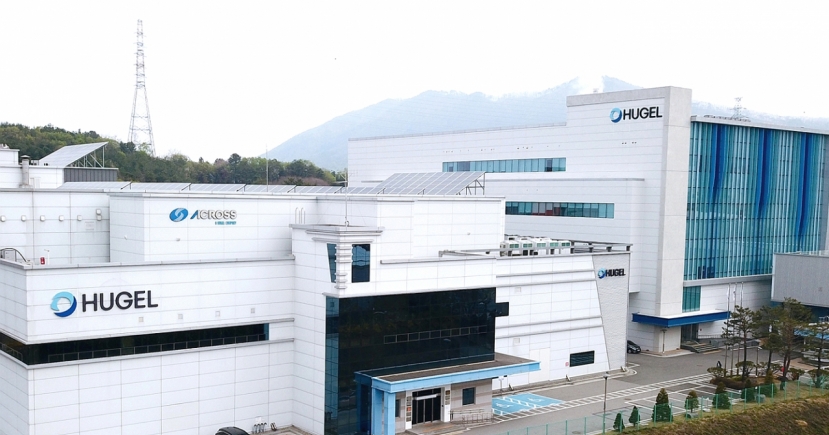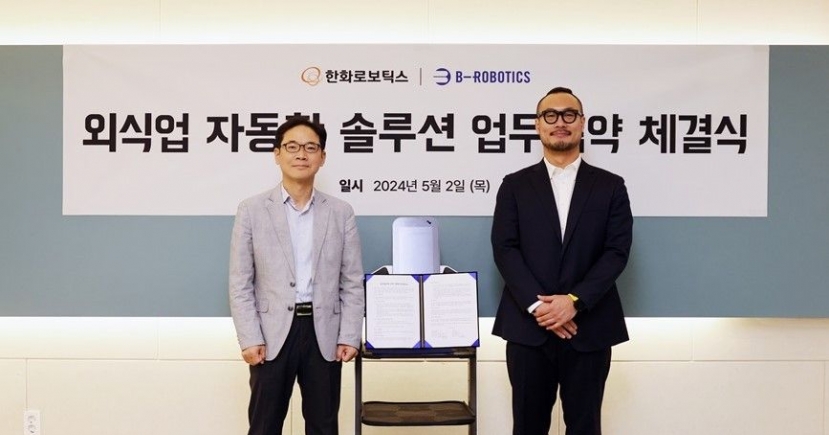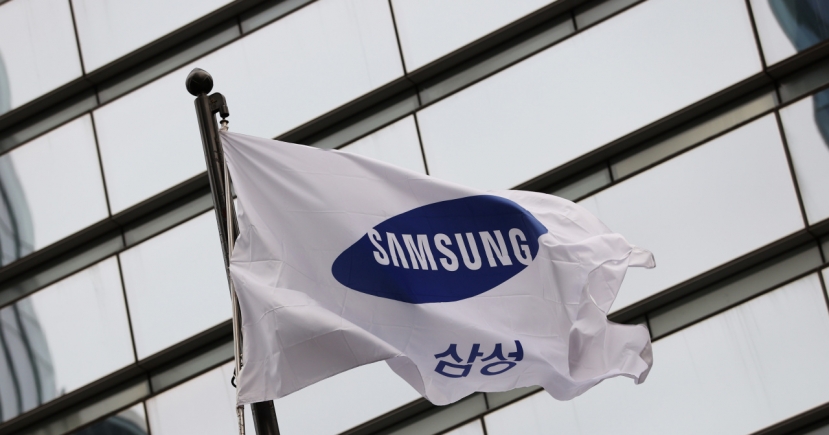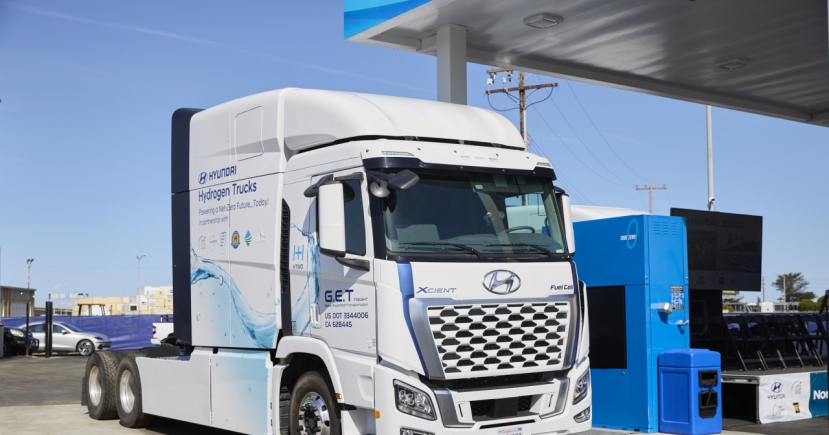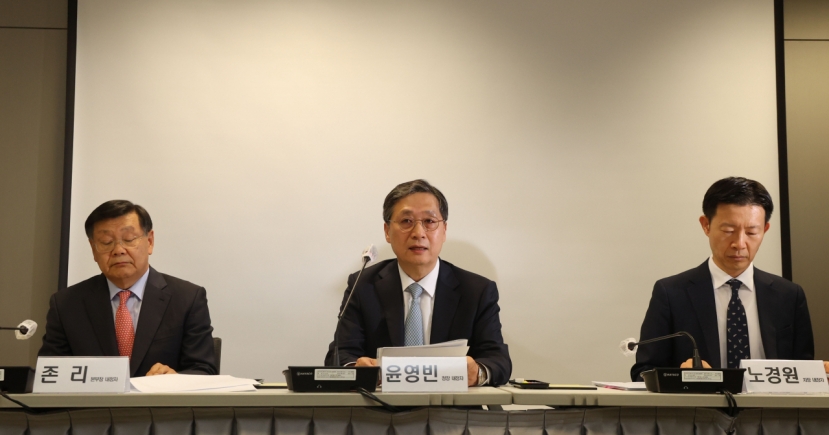Automobiles
Hyundai unveils versatile commercial EV platform
 |
From left: Jeong Yoo-seok, vice president and head of domestic business of Hyundai Motor Company, Min Sang-ki, head of PBV (purpose-built vehicle) business, and Oh Se-hoon, director of PBV development, pose in front of the carmaker's new ST1 vehicle unveiled at the Convensia showroom in Songdo, Incheon, Tuesday. (Hyundai Motor Group) |
Hyundai Motor Company launched its new ST1 series of electrified, purpose-built vehicles for commercial use on Tuesday, aiming to diversify and enhance the efficiency of commercial vehicles for both logistics applications and beyond.
An open API-based software platform -- a first for Hyundai vehicles -- is a standout component of the series, which expands the possibilities of today's commercial vehicles by providing the exact telematics data that each business user needs.
The unveiling took place at the Convensia showroom in Songdo, Incheon, where Hyundai showcased the ST1 for the first time. The ST1 model is based on a chassis-cab design, a basic truck-like vehicle structure that includes a chassis and a cab but lacks a cargo box, which allows for modifications depending on its intended use.
 |
The ST1 series of commercial vehicles is based on a chassis-cab design, a basic truck-like vehicle structure that includes a chassis and a cab but lacks a cargo box. (Hyundai Motor Group) |
This new series begins with two models, the Cargo and the Cargo Refrigerated, equipped with either a standard or a refrigerated cargo box, respectively, to suit different needs. While Hyundai's sister company Kia presented its PBVs at the Consumer Electronics Show earlier this year with a futuristic vision of modular designs for autonomous urban mobility and passenger transport, Hyundai's approach with the ST1 targets more conventional commercial markets. Still, it enables a slightly more innovative range of applications like mobile electric bike charging stations and on-the-go pet care services.
Unlike Kia's highly modular PBVs, which can be fully reconfigured, Hyundai's ST1 maintains a standard chassis-cab design but incorporates Plug & Play technology. This technology allows for the customization of internal and external connectors to adapt vehicle power and data connections for specific commercial needs.
 |
Hyundai Motor Company has been undergoing deployment tests of its new ST1 series of purpose-built vehicles with organizations such as Emergency Medical Services, the National Police Agency, and Kakao Mobility's T Bike. (Hyundai Motor Group) |
“From the outset, we’ve been in close collaboration with Korea's leading last-mile service providers, such as CJ Logistics, Kurly, Emergency Medical Services and Kakao Mobility. Their insights into the unique challenges of the logistics sector were crucial in shaping the ST1 to meet those specific needs,” said Oh Se-hoon, director of PBV Development.
What truly sets ST1 apart from conventional trucks like its Porter models is its first offering of an open API (Application Programming Interference) platform that lets business users leverage a wealth of useful vehicle data. The platform can provide real-time data on vehicle parameters, such as location and battery status, and allows for remote control of features like air conditioning and door locks.
Min Sang-ki, the head of PBV business at Hyundai, explained, “We are launching two major services initially for the ST1 Cargo and Cargo Refrigerated models. The first is a comprehensive fleet management system that covers both models, and the second is a specialized temperature recording app for the Cargo Refrigerated model."
This fleet management system utilizes the data open API to offer a broad array of vehicle data, including status updates, precise location tracking, battery levels, and operational details, all without the need for additional hardware.
Moreover, the ST1's temperature monitoring application integrates seamlessly with the “Cargo Refrigerated Driver” app. This app records and monitors the temperature within the cargo area, ensuring compliance with legal standards that require the logging of temperature data between deliveries -- a task that previously required separate hardware but can now be managed digitally via the app.
 |
(Hyundai Motor Group) |
Hyundai has also installed an Android OS-based infotainment system in the ST1 vehicles. This means that for example, an e-commerce and logistics firm like Coupang could deploy an Android app on its STI vehicles designed specifically for its delivery personnel to streamline package tracking and delivery processes.
Both the ST1 Cargo and Refrigerated Cargo models feature a 76.1 kilowatt-hours battery, achieving ranges of 317 km and 298 km, respectively. Details on how cargo loads might affect these figures are not yet available. These vehicles also boast an ultra-fast charging capability that can recharge the battery from 10 percent to 80 percent in just 20 minutes.
While priced between 59.8 million ($43,690) and 71.5 million won for the Smart and Premium trims respectively, these prices do not include eco-friendly vehicle subsidies or business bulk purchase discounts. The new ST1 series is expected to launch in the first half of this year in Korea, with an international launch not yet on the horizon.
 |
(Hyundai Motor Group) |
The Hyundai ST1 Cargo and its refrigerated counterpart are engineered to deliver robust performance with identical specifications: both feature a peak motor output of 160 kW and torque of 350 Nm. Their efficiency metrics are finely tuned to the demands of commercial use, with the Cargo model achieving 3.6 km/kWh and the Refrigerated variant slightly lower at 3.4 km/kWh due to its additional cooling requirements.
Dimensionally, both versions stand at 5,625 mm in length and 2,015 mm in width, with a generous ground clearance of 2,230 mm designed to facilitate easy access to a variety of parking infrastructures. A low loading floor complements the practical design at 495 mm and an accessible step height of 380 mm, enhancing usability in commercial operations. The Cargo offers a capacious interior with a length of 2,642 mm and width of 1,810 mm, totaling 8.3 cubic meters of volume.
The Refrigerated model, adjusted for its specialized function, slightly reduces internal dimensions to 2,562 mm by 1,750 mm, with a cargo volume of 7.2 cubic meters and an interior height of 1,608 mm.
 |
(Hyundai Motor Group) |
Hyundai has focused significantly on the sensory experience within the cabin, integrating high-strength subframe members, comprehensive sound-absorbing materials, and double-laminated acoustic glass to ensure a tranquil environment. Advanced features such as a hydraulic rebound stopper (HRS) and rack-motor-driven power steering (R-MDPS) bolster the vehicles' stability and handling, collectively enhancing ride quality and driver control.
For operational efficiency, Hyundai introduces features tailored to the needs of frequent drivers: Smart Drive Ready automates the ignition sequence based on occupant presence and door status, while Smart Walk Away automatically secures the vehicle when the driver exits with the smart key. The Refrigerated model further includes a Refrigerator Controller, integrated into the infotainment system, allowing drivers to monitor and adjust the cargo temperature directly from the cockpit, with the unit powered directly from the vehicle's main battery, simplifying the power management system.
By Moon Joon-hyun (mjh@heraldcorp.com)
The Korea Herald



